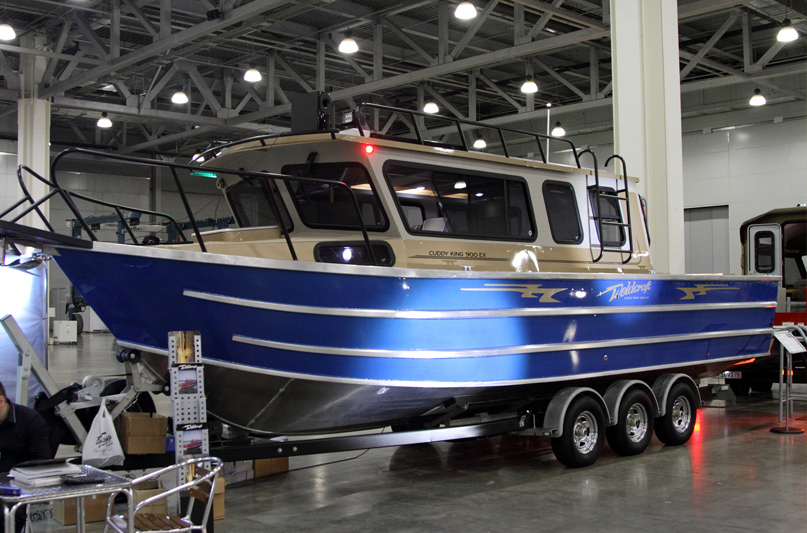“There’s a horse loose in the hospital” is how comedian John Mulaney in his latest Netflix comedy special describes what’s going on at the national level when it comes to the current president’s maneuvers. Mulaney goes on to explain that sometimes the horse is quiet and other times he’s charging around – the larger point is that this era of history is one of change and disruption, and you may not always get what you think you wanted.
When it comes to tariffs and the president, I would posit that he is 100 percent following through on his long-held beliefs that current trade deals mean that the U.S. is on the losing end. According to him, the way forward, while many economists would disagree, is to levy tariffs on imported goods.
If tariffs aren’t something you are too familiar with and are even less sure as to why a column on boating is covering this topic, let me back up a little. A nice working definition of a tariff is a tax on goods coming from another country. You may be surprised to learn, as I was, that the president has a great deal of latitude to issue tariffs without congressional approval. And this is where recreational boating production enters the conversation. Of all the industries in the U.S., the country’s $36 billion boating industry is the only one that faces a triple whammy.
First, there’s the tariff on steel and aluminum (that’s Tariff 232 for those keeping score). Then, there’s an anti-dumping and countervailing duties on Chinese aluminum sheet and lastly the tariff on 300 marine-related products (and we are talking about the guts of boats here like engines, propellers, fuel injection pumps, and on and on). All this uncertainty, tough talk, and anti-free-trade measures results in rising costs of raw materials, component parts, and retaliation from our top trading partners. Put another way, economists don’t agree on much, but one thing that does bring them together is that no one wins by raising tariffs.

Photo: kamski/Bigstockphoto.com
Widening the lens even more, it’s always a good idea to underscore just how uniquely American boating is for those who take to the water. As Northwest Marine Trade Association’s President George Harris likes to say whenever he can, “Boating means business.” And it is big business for family-run smaller operations sprinkled throughout the Northwest and, in particular, rural areas. Taken collectively, boating contributes $39 billion in annual sales and supports 35,000 marine businesses (about 2,000 just in Washington). There are 12 million registered vessels in the U.S. (with Washington contributing about 250,000 to that number).
So how do these tariffs affect boating again? Aluminum sheet is the primary material used in recreational boating. The Commerce Department announced on June 18 an anti-dumping duty (paid at the time of import) of an eye-popping 167.16 percent on common aluminum sheet imports from China. Combining the three-headed tariff monster (anti-dumping, countervailing and the marine products tariffs) together, that’s a 210 percent tariff on Chinese aluminum. And to what end? It’s not like the Chinese will just sit back and not raise tariffs on their imports. I suspect they could find one or two examples of slights they feel on goods entering their country. Adding even more to this precarious situation, it’s a good reminder that Washington is the most trade dependent state in the country. Cherries, anyone?
Let’s just say this horse is making some noise in the hospital. And the other horses from other hospitals are responding in kind. As a result, the global price of aluminum has increased 20 to 30 percent. In addition to increased costs of manufacturing materials and components, Canada, the European Union, and Mexico – which account for 69% of annual U.S. boat exports responded by applying retaliatory tariffs on all boats comprised of aluminum.
The timing of this disruption could not come at a more booming time for the boating industry. Looking at preliminary numbers for Washington state, boat sales are up 60 percent in dollars from the second quarter last year and up 5 percent in units. This news complements what the National Marine Manufacturers Association (NMMA) is seeing nationally: boat sales have hit a ten-year high.
I’ll give the national head of the boating industry the last word here. Thom Dammrich, NMMA president, doesn’t hold back when he says, “Simply put, these tariffs are a disaster for our industry. All types of recreational boats are on the retaliatory lists from both Canada and the EU. As a result, rather than protecting American manufacturing, these tariffs directly harm the entire recreational boating industry—one of our country’s enduring American-made industries. To make matters worse, Canada, Mexico, and the EU are the top three export markets for American-made marine products and in 2017, they accounted for nearly 70 percent of marine exports.”